AWS Three-Tier Architecture: Part-3
 Naveen Kumar
Naveen KumarTable of contents
Database Deployement
Subnet Groups
Navigate to the RDS dashboard in the AWS console and click on Subnet groups on the left hand side. Click Create DB subnet group.

Give your subnet group a name, description, and choose the VPC we created.
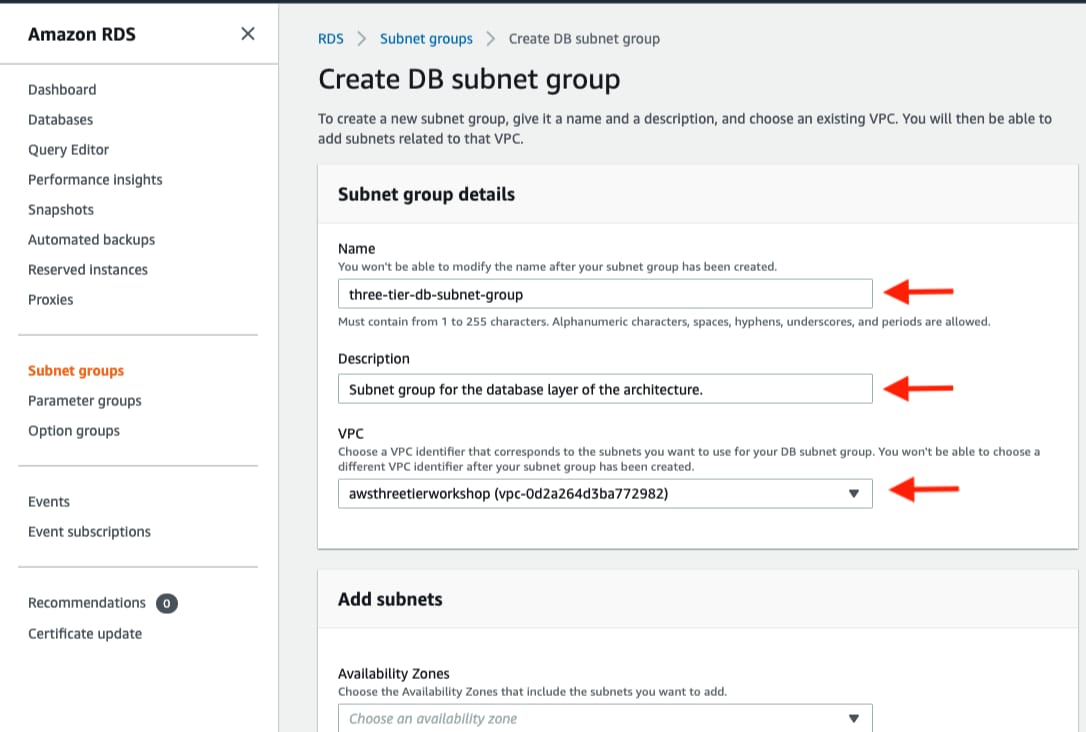
When adding subnets, make sure to add the subnets we created in each availability zone specificaly for our database layer. You may have to navigate back to the VPC dashboard and check to make sure you're selecting the correct subnet IDs.

Database Deployement
Navigate to Databases on the left hand side of the RDS dashboard and click Create database.

We'll now go through several configuration steps. Start with a Standard create for this MySQL-Compatible Amazon Aurora database. Leave the rest of the defaults in the Engine options as default.

Under the Templates section choose Dev/Test since this isn't being used for production at the moment. Under Settings set a username and password of your choice and note them down since we'll be using password authentication to access our database.
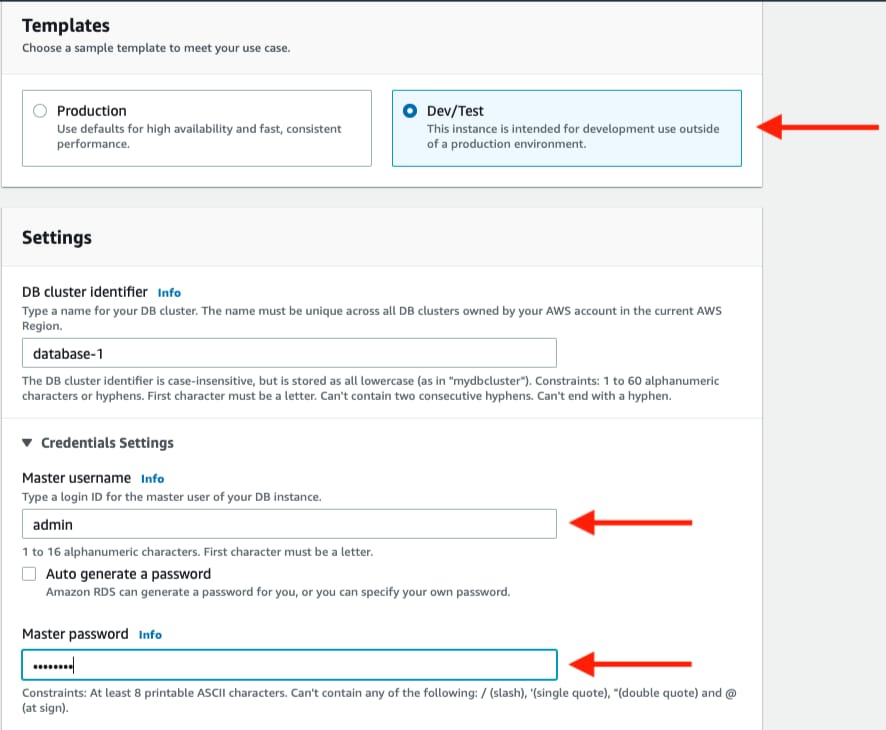
Next, under Availability and durability change the option to create an Aurora Replica or reader node in a different availability zone. Under Connectivity, set the VPC, choose the subnet group we created earlier, and select no for public access.
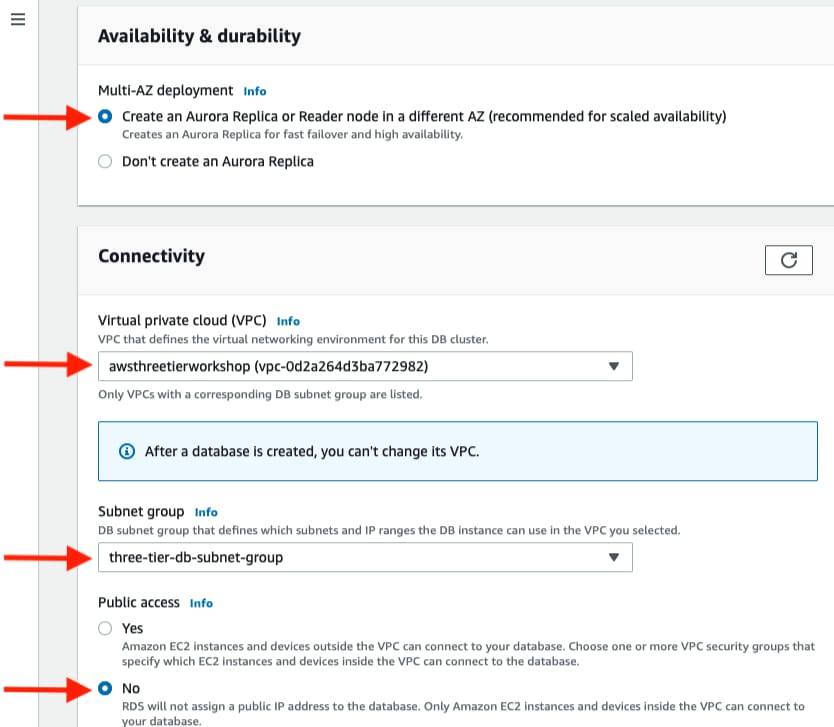
Set the security group we created for the database layer, make sure password authentication is selected as our authentication choice, and create the database.
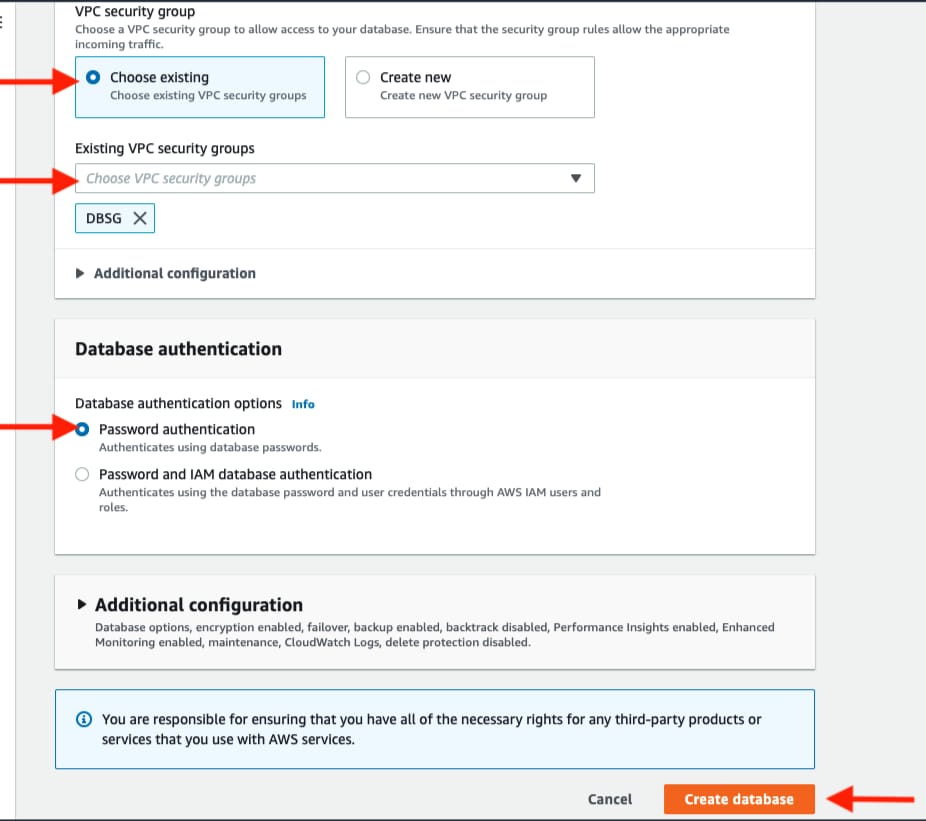
When your database is provisioned, you should see a reader and writer instance in the database subnets of each availability zone. Note down the writer endpoint for your database for later use.
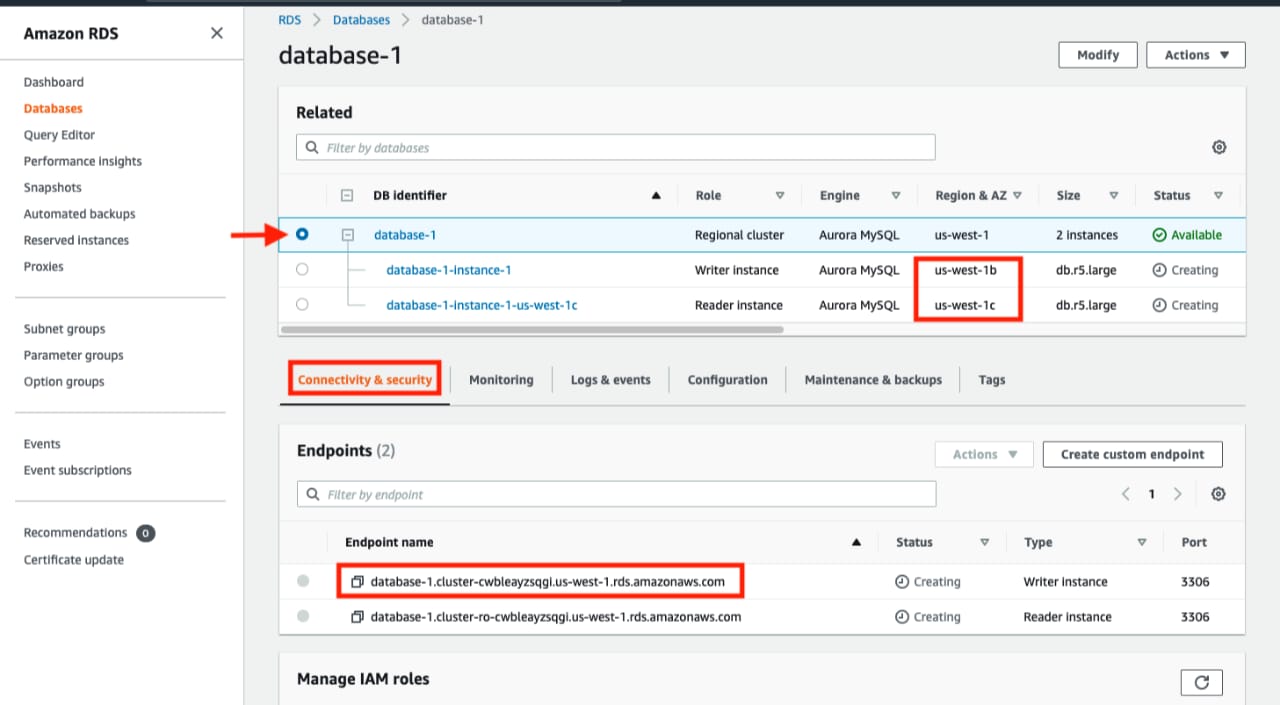
Conclusion
I hope you found this journey through AWS three-tier architecture implementation insightful and enjoyable.
Please continue to Part 4 to learn more about the further steps in our implementation process.
You can access Part 4 via the following link below:
AWS Three Tier Architecture(Part-4)
Thankyou !!!
Hope You have Learned !!!
Subscribe to my newsletter
Read articles from Naveen Kumar directly inside your inbox. Subscribe to the newsletter, and don't miss out.
Written by
